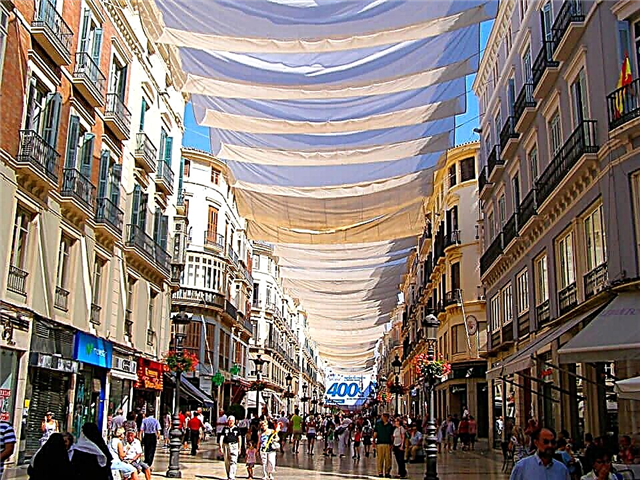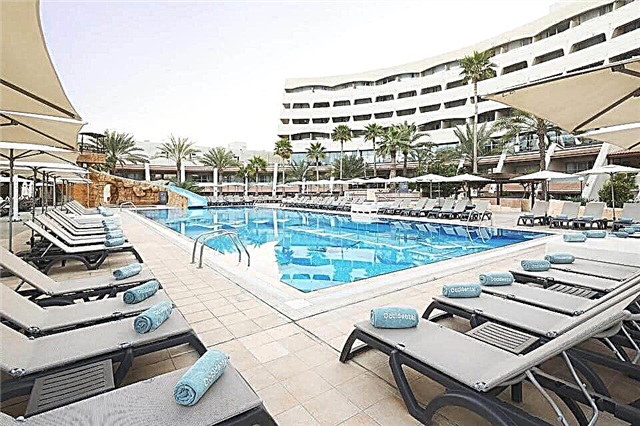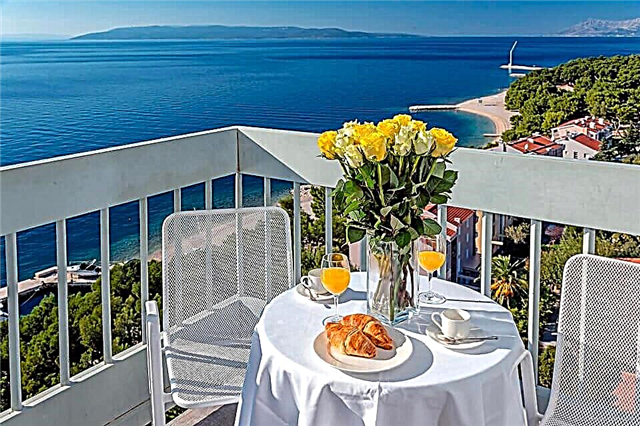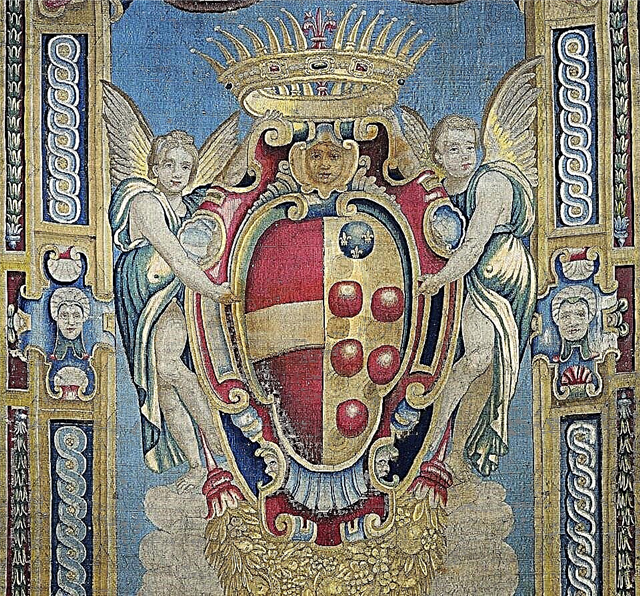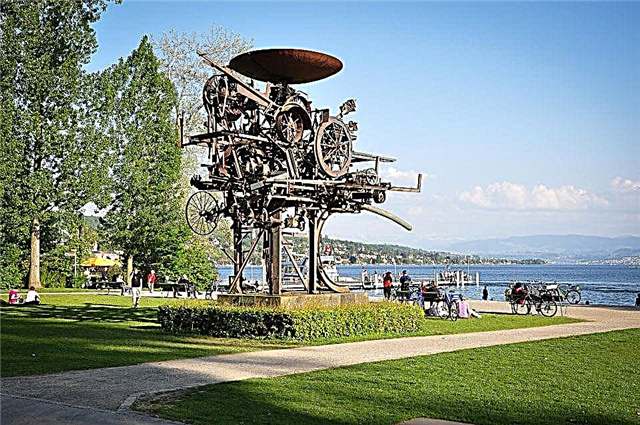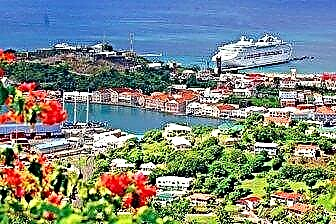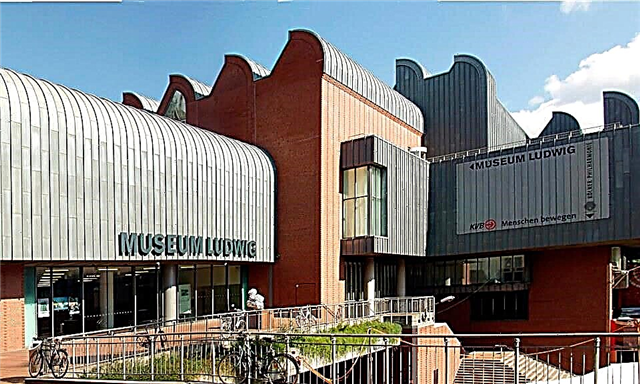Cologne is a metropolis full of charisma and charm, stretching on the banks of the Rhine, along with Istanbul and Rome, one of the three most holy cities in the world. Its two thousandth history is reflected in Romanesque basilicas, well-groomed winding streets, palaces and Gothic architecture of ancient buildings. This place is famous for its numerous tourist attractions, which will take at least a week to see. For those of you who do not have time and are wondering what to see in Cologne in one day, we have prepared an overview of the most famous sights of the cathedral city.
Cologne Cathedral

A self-guided tour of the metropolis traditionally begins with a visit to the second largest temple in the world (after Ulm Munster). Unique architecture, historical significance and dazzling stained glass windows, combining 72 shades, contributed to the inclusion of the grandiose structure, located next to the main train station, on the list of UNESCO cultural heritage sites. The first stone of the Roman Catholic Church was laid in 1248. The city authorities wanted to build a basilica larger than all existing churches in Europe. However, their plans did not come true - in 1450 construction stopped.
The resumption of work began only 300 years later. In 1880, thanks to the generous donations of the King of Prussia, Friedrich Wilhelm IV, the Cologne Cathedral received its first parishioners. The Kölner Dom is a masterpiece of the Gothic style. The lacy spiers of the five-nave basilica soar 157 meters into the sky. Inside, the tower is equipped with spiral staircases, each of which has 509 steps leading to the bell towers and observation platforms. A dizzying panorama of the city, opening from a height of 95 m, awaits those strong in body and spirit. In 1164, the emperor of the Roman Empire, Frederick I Barbarossa, presented the religious shrine to the archbishop.
The cathedral is open daily:
- from November to April: 06: 00-19: 00
- from May to October: 06: 00-21: 00
- on Sundays and holidays: 13: 00-16: 30
During the divine services, the entrance for tourists is closed. A visit to the church is free, the cost of climbing to the observation deck is 4 euros.
Palaces Augustusburg and Falkenlust

The magnificent 18th century ensemble of two luxurious buildings in the city of Brühl, located 14 km from Cologne, is an example of Rococo and late Baroque architecture. The adjacent elegant park with double flower beds was designed in 1728 by the French garden designer Dominique Girard, who designed the gardens of Nymphenburg and the Upper Belvedere in Vienna. The history of the delightful buildings in the Rhine-Erft region takes us back to 1725, when the Archbishop and Elector of Cologne Clemens August gave the order to build a summer residence for him - a palace named after the owner.
Fifteen years later, a small castle Falkenlust appeared near Augustusburg - a place for solitude, secret meetings and falconry. The interiors of both buildings have received a rich rocaille design. The main palace staircase in Augustusburg is especially impressive. In Falkenlust, the Indian lacquered cabinet deserves attention, in the decoration of which Asian motives can be traced. At various times, the guests of the architectural complex were Elizabeth II, Mikhail Gorbachev, Nelson Mandela and Pope John Paul II. Today, the historic buildings are open to the public as museums.
Working hours:
- Tuesday-Friday: 9:00 am to 12:00 pm and 1:30 pm to 4:00 pm
- Weekends and holidays: from 10:00 to 17:00
Address: Schlösser Brühl Schlossstraße 6.
Amusement Park "Fantasy Land"

Brлеlé is also home to a fantastic land of fun, the Phantasialand theme park, offering fun for all ages. The territory, equal in area to 80 football fields, is divided into 6 sectors, transporting guests to old Berlin, Mexico, medieval China, the Wild West, Ancient Hellas and mysterious Africa. In each zone, visitors are greeted by traditional architecture and "locals" dressed in national costumes.
The park's rides are endless. Daredevils queue up at the Night Hawk - roller coasters, whose trolleys with incredible speed in the pitch darkness rush along the track, replete with sharp turns, ups and downs. Those looking for a quieter experience will be interested in hot air ballooning, cable car travel and boating.
Address: Berggeiststraße 31-41, Brühl. The park is open from March to January.
Ludwig Museum

The art gallery on Heinrich-Böll-Platz, created on the basis of the private collection of the family of the German philanthropist and collector Peter Ludwig, awaits modern art lovers. In 1986, the couple opened a museum, the collection of works of which consisted of 350 works. Today, the building, built in the Art Nouveau style, exhibits photo and video materials, samples of Russian avant-garde, pop art, abstractionism, expressionism and post-impressionism.
Among the treasures of the museum: the works of Picasso, Chagall, Malevich, Rodchenko, Kirchner, Popova. Some exhibitions, for example, half-empty bottles surrounded by stacked cigarette boxes, put even fans of surrealism into a stupor.
The museum is open from Tuesday to Sunday from 10:00 to 18:00. The entrance ticket costs 12.00 €.
Hahnentorburg gate

Seven centuries ago, a fortress wall passed here. Its western front gate saw the solemn entrance of the emperors of the Roman Empire, who followed to Cologne to worship the relics of the Magi. At the beginning of the 19th century, the medieval building was used as a prison dungeon, and in 1877 the first horse tram station was opened on the adjacent square. In 1888, the premises of the perfectly preserved building housed the expositions of the historical museum.
The bombing of the British aviation in 1943 partially destroyed the architectural monument. After the restoration, the Hahnentorburg Gate was used as a gallery displaying works by German artists. Since 1988, the building houses the headquarters of the guard of honor of the annual carnival.
Address: Rudolfplatz 1.
Cable car

The sights can be seen walking the streets, cycling or taking the sightseeing bus. But what about seeing interesting places from above, or rather, from the cable car gondola stretched across the river? The funicular was opened in April 1957. German Chancellor Konrad Adenauer was his first guest. Since then, the 34-meter-high air crossing has carried over 20 million passengers, offering them an impressive panorama of the Rhine and the metropolis on its shores.
The 935 m long funicular has 44 cabins for 4 people. Travel speed - 10 km / h. To use the unusual mode of transport, you need to get to the Zoo / Flora stop (bus route 140) or Claudius-Therme (routes 150, 250, 260). Fare:
- Adults: 4.80 € one way, 7 € round trip
- Children: 2.70 € one way, 4 € round trip
Working hours: from 20.03. until 01.11. daily from 10:00 to 18:00.
Church of the Assumption of the Blessed Virgin Mary

Construction of the city's second largest temple (after the Kölner Dom) began in 1618. The first architect of the project was Christoph Wamser, a fan of the Baroque style. The torch was taken over in 1623 by Valentin Boltz from Thuringia. In 1628, Ferdinand of Bavaria, elector of the Roman Empire, donated a gilded altar 22.5 meters high to the church. A year later, divine services began within the walls of the basilica, although construction work was completed only in 1689.
With the arrival of Napoleonic troops, the church fell on hard times. In 1794 it was plundered and closed.The doors of the cathedral were opened again for parishioners only in 1801, after the adoption of Catholicism by France. The bombs of the Second World War destroyed the baroque building from the face of the earth. The restored holy house appeared on 26 Marzellenstrasse in 1979. Today the basilica is used by the Italian community as a parish church. The main nave houses the only mechanical nativity scene in Cologne, which recreates scenes from the night of the Nativity of Christ.
St. Martin's Church
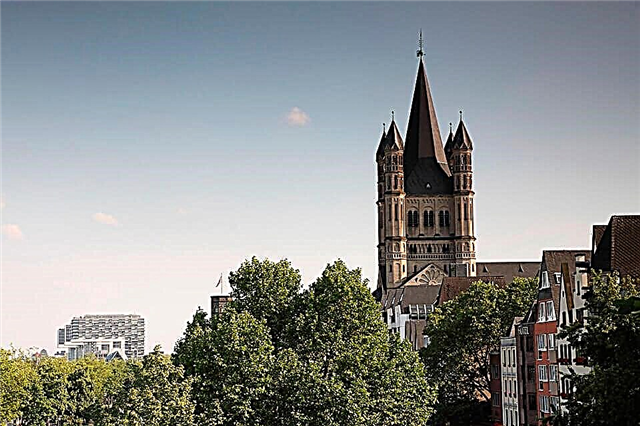
The townspeople call one of the 12 Romanesque churches Big Saint Martin. The construction of a three-nave basilica with a sharp spire and four angular 70-meter towers began in 1220. The building is based on the foundations of a Benedictine monastery destroyed by fire. Over its centuries-old history, the building has gone through more than one reconstruction. The last restoration ended in 1985, since then the doors of the temple have been open to parishioners.
In comparison with the decorated multi-colored stained-glass windows, vaults and a monumental facade, the interior decoration strikes with modesty, bordering on asceticism. The interior is decorated only with a sculptural image of a crucifix, an altar made in the form of a clover leaf, and a fragment of an antique column. According to legend, the ancient relic does not allow people with evil thoughts into the walls of the temple.
The basilica is located at An Groß St. Martin 9 and is open from 9:30 am to 7:30 pm (Tuesday-Friday) and from 10:00 am to 7:30 pm on weekends.
Hohenzollern bridge

Along with the central station, the 409.19 m long arched railway structure made of concrete and steel, which crosses the Rhine, is an important transport hub for the Federal Republic of Germany. The Hohenzollern Bridge, which is crossed by about 1,500 trains every day, is an integral part of the cityscape. At night, it is illuminated by powerful spotlights, making it a favorite subject for photography.
The first crossing of the river, named after the famous German dynasty of kings of Prussia, opened in 1911. Those entering the bridge were greeted by equestrian statues and sculptures of emperors. In 1943, the structure was badly damaged by bombs, and two years later it was completely destroyed. Traffic on the restored bridge resumed in 1948.
If you are on a romantic trip, take the time to walk across the Rhine Bridge. Along the way, you will see millions of symbols of love - various locks (from tiny to huge barns) that completely cover the iron supports of the structure. The tradition of leaving on fences engraved signs of an unbreakable union began with the advent of the 21st century. Despite repeated attempts by the city authorities to remove the locks, they still serve as an ornament to the Hohenzollern Bridge, weighing its weight by several tons.
Tunnes and Shel
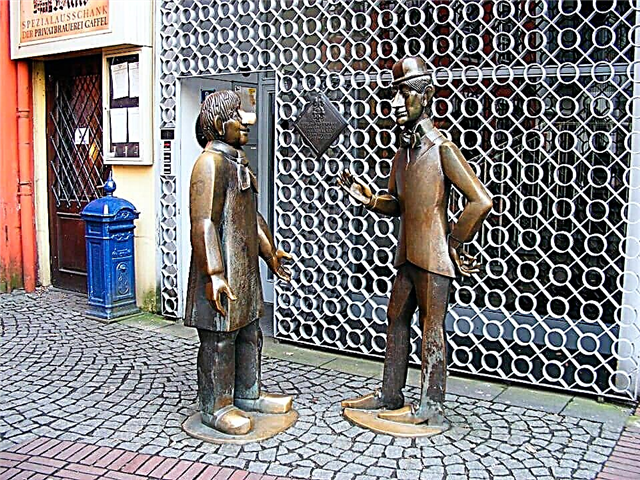
For connoisseurs of folklore, the metropolis has prepared a gift: a sculptural composition on the Alter Markt, depicting two completely opposite characters. One of them, skinny, cunning and arrogant Shel, is dressed in a tuxedo and bowler hat, the other, a plump, friendly and stupid Tünnes, looks like a simple villager. This couple is the protagonists of numerous anecdotes and comic theatrical performances.
The story of the heroes began in 1803, when Johann Christoph Winters, the founder of the Hänneschen puppet theater, introduced into the repertoire two invented characters, who later became allegories of resourcefulness and innocence. In 1974, the Austrian sculptor Wolfgang Andreas Reiter immortalized a funny couple in metal. Tourists have a belief: those who stand on the tips of the boots of both figures and rub the prominent nose of Thünnes, the bronze inhabitants will give good luck in business and happiness.
Town hall

To the north of the historic part of the metropolis, on the Rathausplatz, is the oldest town hall in Germany - the seat of the City Council. According to archival documents, in the middle of the 12th century there was already a “House of Citizens” representing the interests of local residents and merchants of the Hansa (North European Trade Union). In 1330, a new structure was erected on the foundations of the old building, which in 1414 was supplemented by a 61-meter Gothic tower. After another 150 years, a Renaissance gazebo appeared. As a result of numerous reconstructions, today's town hall amazes with a mixture of architectural trends.
The facade of the five-story building is decorated with 124 sandstone sculptures depicting famous citizens of the city, saints and powerful of this world: emperors and popes. The tower has a carillon containing a set of 45 bronze bells. One of the 24 pre-programmed melodies is played four times a day. Through the baroque main entrance, visitors enter a spacious 30-meter hall with a height of 3.30 m. It is decorated with a copy of the Altar of the city's patrons, the original of which is kept in the Cologne Cathedral.
Gate of Saint Severin

The well-preserved southern gate, through which the road to Bonn, which lies 30 km, passed, reminds of the Middle Ages, when the city was surrounded by a fortress wall. The four-storey stone structure, erected in the 13th century, is a massive hexagonal tower topped with a crenellated roof and complemented by two side turrets. This place served not only as a trade route. Here the city authorities greeted high-ranking guests: Prussian kings and foreign monarchs.
In 1881, the defensive fortifications were demolished, and a museum of natural history was founded in the bastion, which was soon replaced by a museum of hygiene. With the coming to power of the National Socialist Party, the premises housed the headquarters of the Hitler Youth, and in 1979 a community center began functioning in the historic building.
The attraction is located on Chlodwigplatz street 2.
Botanical Garden "Flora"

A visit to the urban green oasis is a must on the one-day tourist route. A visit here won't hurt your budget - admission to the park is free. On the territory of 11.5 hectares, surrounded by fountains, sculptures, ponds and flower beds, exotic representatives of the flora grow. Giant trees, such as the American sequoia, coexist here with European beeches and Asian laurels.
The highlight of the garden is the rose gardens and four interconnected greenhouses, where the same temperature is maintained throughout the year. They contain a collection of 5,000 plant species in the tropics and deserts. Near the palm alley, there are comfortable benches overlooking a small waterfall.
The botanical garden is located at: Amsterdamer Strasse 34. You can get here by tram lines 16 and 18 or omnibus number 140. Stop - Zoo / Flora.
Rhine river boat ride

In the historic center of the metropolis, a little to the south of the Cologne Cathedral, there is an embankment - a place whose image is captured on souvenirs purchased by tourists in memory of the city. The long, well-groomed cobblestone alley offers not only scenic views of the Rhine and the Hohenzollern Bridge, but also the many bars, restaurants and traditional open-air pubs (Biergarten). In addition, there are several berths, from where from March to October you can take a refreshing journey along one of the longest rivers in Europe.
We recommend that you join a panoramic boat tour organized by the shipping company Köln-Düsseldorf Rheinschiffahrt. From a comfortable boat for 20 guests, you will see the most famous sights of the fourth largest city in Germany from an unusual angle.
The river tram departs from the pier (you can find it by the big red letters KD) at 10:30, 12:00, 13:30, 15:00, 16:30 and 18:00. Ticket prices: adults - 10.40 €, children - 6 €. During the trip, you can use the German or English-language audio guide. Travel time is one hour.
Claudian Baths

Claudius Therme, a splendid health complex located in the Rhine Park on Sachsenbergstraße 1. The territory, decorated with original buildings stylized as architectural structures of Ancient Rome, is divided into several sectors. The first of them is a common area, which includes an inhaler, jacuzzi, solariums and baths (open and closed). The most visited is the pool with thermal water, the temperature of which does not drop below +23 ° C.
This is followed by a bath area consisting of wooden huts. Visitors are offered herbal, Finnish saunas, a hot Erdwal sauna with a fireplace, a Russian bath, a Serailbad bath with Ayurvedic massage and a panoramic sauna overlooking the cathedral. A light dinner in one of the cozy cafes will complement your relaxing break and wellness treatments.
The Claudian Baths are open daily from 9:00 to 24:00. A single visit to the center (2 hours) will cost you € 13.50 on weekdays and € 15.50 on weekends.


